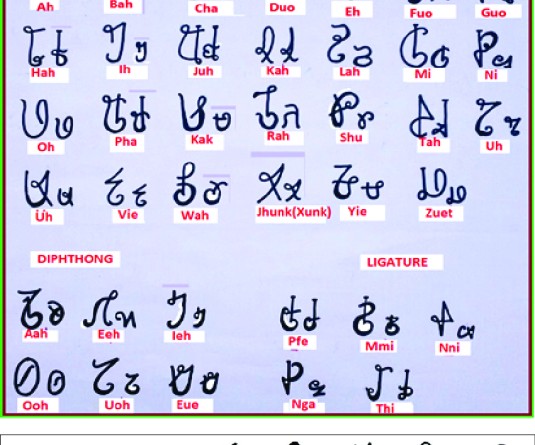
As per India meteorological department, during October 2023, most parts of India are likely to receive below-normal rainfall. However, many areas in south peninsular India, northeast India, a few pockets in the northernmost region of the country are likely to experience above normal rainfall. Monthly rainfall over the country as a whole during October 2023 is most likely to be normal (85-115 % of Long Period Average (LPA)).
In October 2023, above-normal maximum temperatures are likely over most of the country. Similarly, above-normal minimum temperatures are likely over most parts of the country except some areas in northeast India where normal minimum temperatures are likely.
General Advisory
1. Harvesting time for upland paddy and preparation should be started for sowing of toria, taking the advantage of soil moisture after upland rice.
2. Time for making nursery for winter vegetables to be planted after paddy.
3. After harvest of rice/maize the soil moisture should be conserved through mulching or zero tillage cultivation for the succeeding crops.
4. Time for sowing rabi maize through mulching and zero tillage cultivation practices to generate more income from selling of green cobs during winter months.
Spices, Plantation, Medicinal
& Aromatic plants – Azeze Seyie
Primary nursery of large cardamom
Seeds are generally sown during September-October. Seed beds are prepared in well drained soils dug to a depth of 30cm and left for weathering. Raised beds with 15 to 25cm height, 1m width and convenient length, preferably 6m. Well decomposed cattle manure is mixed with the soil and the surface of the bed is made to a fine tilth. About 80-100 g of seeds per bed is sown in lines across the bed at a distance of 10cm. Seeds are covered with fine soil and mulch with rice straw/dry grass (10-15 cm thick). Watering is done at regular intervals to keep the surface of the bed moist. When average germination is noticed, the mulch material is removed. Shades are immediately erected by using bamboo mats/agro shade nets. When the seedlings attain 3-4 leaf stage they are transplanted to secondary beds/nursery.
Entomology – Moanaro Lemtur
1. Install yellow sticky traps while raising vegetables nursery.
2. Use fully decomposed FYM/ manures while raising nursery to avoid termites and diseases problem.
3. If dead hearts are observed in paddy field spray neem oil @ 2ml/L or Flubendiamide 39.35% SC @ or Indoxacarb 14.5 sc @ 0.5 ml/L of water.
4. If webbing, scrapping or caterpillars are observed in soybean leaves spray NSKE 5% or neem oil @ 2ml/L or Spinosad 45 SC @ 0.75 ml/L of water.
5. In mango orchards where Mealy bug, Drosicha mangiferae incidence prevailed, flood the orchards with water followed by deep ploughing to kill the eggs.
Agroforestry – Pempa Lamu Bhutia
ARECANUT: In October-November, a second dose of cow dung and fertilizers should be applied to arecanut plants. The recommended quantities for each year of planting are as follows:
1st year:
Cow dung: 4 kg per plant
Urea: 73 gm per plant
Single super phosphate (SSP): 83 gm per plant
Muriate of potash (MOP): 76 gm per plant
2nd year:
Cow dung: 8 kg per plant
Urea: 145 gm per plant
Single super phosphate (SSP): 166 gm per plant
Muriate of potash (MOP): 153 gm per plant
3rd year:
Cow dung: 12 kg per plant
Urea: 218 gm per plant
Single super phosphate (SSP): 250 gm per plant
Muriate of potash (MOP): 230 gm per plant
Apply the mixture in a ring around the base of the arecanut plant, at a distance of 75-100 cm radius from the base. Apply to a depth and width of 15-20 cm.
BAMBOO: Prune lower branches from December to January to reduce culm congestion and better clump growth.
Practice culm thinning after 5th year of plantation by removing damaged, weak, diseased culms. This will prevent congestion and facilitate clump growth.
The majority of bamboo species mature after 4th year onwards. The mature culms are typically found in the middle of the clump and should be harvested during the initial years. Felling should be done at a 70% felling intensity starting in December and completing by the end of March. Remember to retain a certain proportion of older culms to provide protection to the new ones.
Fishery – Jyotish Barman
• Repair pond embankment that may have got damaged due to excessive rainfall.
• Constantly monitor fish activities and movement every morning, noon and evening. At early morning hours the fish may come to surface to gulp air or breathe. If such symptoms are observed, immediately mix the pond water by splashing or by pumping fresh water from nearby sources.
• Diseased or injured fish should be dipped in 1 ppm KMnO4 solution for 1 minute and then release into the pond.
• Prune tree branches around the pond so that leaves do not fall on water. Make sure that the pond receives enough sunlight.
• Apply lime @ 27 kg/ha preferably in the morning hours preferably during 9 – 10 am to maintain the desired pH level of the water. Lime should be mixed with water in a container and allowed to cool and sprayed over the pond surface. Avoid liming on rainy or cloudy days.
• After 10 days of lime application, apply cow dung @ 200 kg /ha, Urea @ 25 kg/ha and SSP @ 20 kg/ha.
• Feeding should be continued @ 14 kg/day/ha
• If the temperature is too high, put some floating aquatic plant in one corner of the pond to provide shelter for the stocked fish. The covered area should not exceed one-fourth of the total water surface area.
• If excessive growth of algae (algal bloom) occurs, discontinue feeding and fertilization for few days until the bloom disappears
• Fish weighing above 600-700 g can be partially harvested to allow the remaining fish to grow fast.
• Remove pond bottom debris before the onset of winter.




